Wildflowers, Grasses and Other Nonwoody Plants
Media
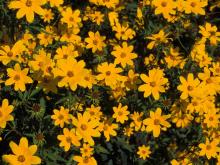
Species Types
Scientific Name
Bidens aristosa
Description
Tickseed sunflower has flattened black seeds that attach themselves to clothing and pets via two needlelike awns. In flower, it grows in massive displays in moist bottomlands.
Media
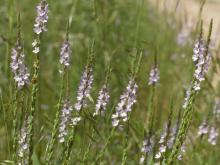
Species Types
Scientific Name
Verbena simplex
Description
Narrow-leaved vervain is a short, slender perennial with single stems or with upper stems sparingly branched. Its many small flowers are crowded on narrow spikes. The corollas are tubular, deep lavender or purple, with 5 spreading lobes.
Media

Species Types
Scientific Name
Cunila origanoides
Description
Sometimes called wild oregano, dittany, like true oregano, is a member of the mint family and can be used as a culinary herb and in teas. Look for it on dry, wooded slopes in Ozark counties.
Media

Species Types
Scientific Name
Capsella bursa-pastoris
Description
Shepherd’s purse is a plant that started in Europe and western Asia and has been introduced nearly worldwide. Like the common dandelion, it has several adaptations that make it a successful colonizer of disturbed soil.
Media
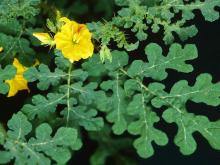
Species Types
Scientific Name
Solanum rostratum
Description
A spiny annual with bright yellow flowers and dandelion-like leaves, buffalo bur is an introduced member of the nightshade family.
Media

Species Types
Scientific Name
Physalis longifolia
Description
Common ground cherry is closely related to the tomatillo, which you’ve probably seen in the grocery store or had in a delicious salsa verde at a Mexican restaurant. The fruits of ground cherry are edible, too.
Media

Species Types
Scientific Name
Datura stramonium
Description
Pretty but poisonous, jimsonweed has white goblet-shaped flowers that open around midnight. This native of tropical America was introduced nearly throughout the United States and thrives in disturbed soils.
Media
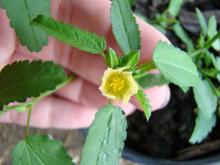
Species Types
Scientific Name
Sida spinosa
Description
Prickly sida, a weedy plant seen along roadsides, streambanks, and the edges of fields, is in the same family as hibiscus, okra, and hollyhocks. A small, spinelike projection grows at base of each leaf.
Media

Species Types
Scientific Name
Solanum carolinense
Description
Horse nettle is a native perennial with spiny stems and leaves, white to purplish flowers, and toxic fruits that look like tiny yellow tomatoes. It does well in disturbed habitats, and many people consider it a weed.
Media
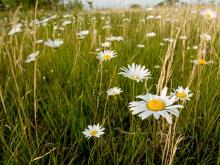
Species Types
Scientific Name
Leucanthemum vulgare (formerly Chrysanthemum leucanthemum)
Description
Ox-eye daisy, though familiar, is not native to North America. It was introduced long ago from Eurasia. Common in grassy uplands, pastures, fencerows, and roadsides, it can colonize aggressively in the garden.
See Also
About Wildflowers, Grasses and Other Nonwoody Plants in Missouri
A very simple way of thinking about the green world is to divide the vascular plants into two groups: woody and nonwoody (or herbaceous). But this is an artificial division; many plant families include some species that are woody and some that are not. The diversity of nonwoody vascular plants is staggering! Think of all the ferns, grasses, sedges, lilies, peas, sunflowers, nightshades, milkweeds, mustards, mints, and mallows — weeds and wildflowers — and many more!





















